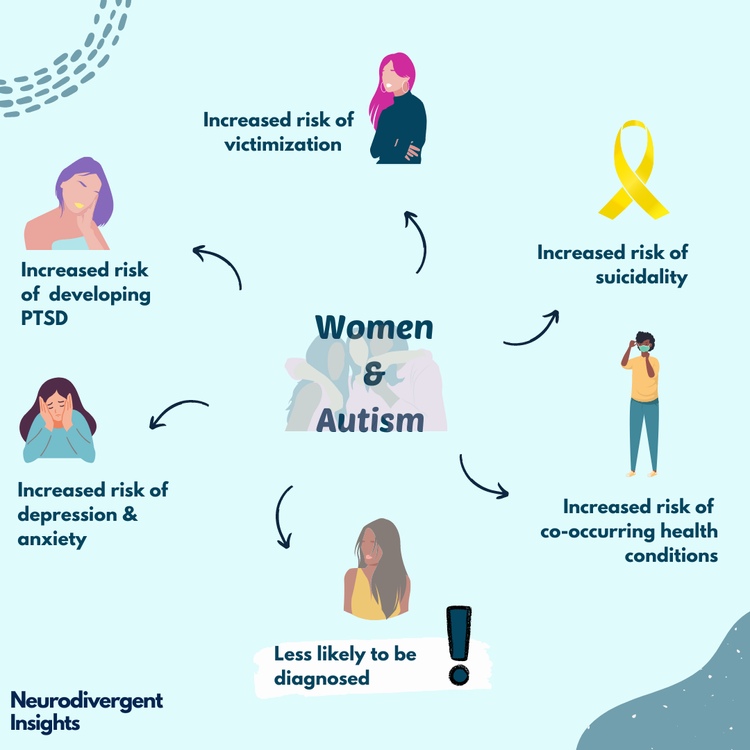Browsing Social Obstacles: Tips for Individuals Living with Autism
Browsing Social Obstacles: Tips for Individuals Living with Autism
Blog Article
Recognizing Autism: A Comprehensive Guide to Signs and signs
Autism Range Condition (ASD) encompasses a wide variety of qualities that can significantly influence an individual's social interactions and everyday functioning. Identifying the signs and signs, such as obstacles with eye get in touch with, social communication troubles, and sensory level of sensitivities, is essential for early treatment. Comprehending these nuances not just aids caregivers and educators in providing appropriate assistance yet additionally promotes a much more inclusive setting for people with ASD. As we discover the intricacies of autism, it becomes necessary to consider just how these indicators materialize in a different way throughout the spectrum and what effects they hold for efficient treatment approaches.
Review of Autism Range Condition
Specifying Autism Spectrum Problem (ASD) includes identifying it as a complicated neurodevelopmental problem characterized by a range of obstacles in social interaction, interaction, and behavior patterns. The term "range" shows the wide irregularity in symptoms and their intensity, which can differ substantially from one person to another. ASD normally shows up in early youth, although some people might not get a medical diagnosis up until later in life.
Factors influencing the advancement of ASD consist of genetic predispositions and environmental variables, although the exact reasons continue to be under examination. Medical diagnosis commonly depends on behavioral assessments, as there are no definitive medical examinations for ASD. Early treatment is vital and can dramatically boost outcomes, concentrating on boosting interaction skills, social communications, and adaptive behaviors.
People with ASD may also show special staminas, such as outstanding interest to detail or specific locations of experience. Recognizing the diverse nature of ASD is important for fostering a comprehensive setting that fits neurodiversity. Continued study is crucial for developing effective treatments and support systems, making it possible for individuals with ASD to prosper and satisfy their possible within society.
Usual Indications of Autism
Identifying the common indicators of Autism Range Condition (ASD) is essential for early recognition and intervention. These indications can differ commonly in seriousness and discussion, but particular characteristics are regularly observed in individuals with ASD.
Among the most common indicators is a significant difficulty in developing and maintaining eye get in touch with. People may additionally display minimal rate of interest in social interactions and show a preference for singular play. Recurring habits, such as hand-flapping, rocking, or rotating items, frequently emerge early in youth. Additionally, some kids may develop stringent regimens and become distressed if these routines are interfered with.
Sensory sensitivities are also typical; people may panic or underreact to sensory stimuli, such as lights, audios, or textures. autism. Language development can be irregular, with some children showing postponed speech or utilizing language in uncommon methods, including echolalia-- repeating phrases or sentences listened to in other places
It is vital to note that not every individual with ASD will present all these indicators, and the level of these actions can vary considerably. Early recognition permits prompt assistance and sources, improving the lifestyle article source for those on the spectrum.
Social Communication Challenges
Social interaction obstacles are a hallmark of Autism Spectrum Disorder (ASD), influencing a person's capability to engage efficiently with others. These problems can manifest in various ways, including obstacles in initiating and preserving conversations, understanding social signs, and reacting properly in social interactions.
Individuals with ASD might deal with nonverbal communication, such as eye call, faces, and body movement. This can cause misconceptions, as their communicative intent may not be correctly translated by others. Furthermore, they might find it hard to understand the nuances of tone and context, which are crucial for effective interaction.
In group settings, people with ASD may really feel overwhelmed and might not recognize exactly how to sign up with in conversations (autism). They could likewise show irregular conversational patterns, such as monologuing about certain interests without recognizing social reciprocity
Moreover, these difficulties can cause social seclusion or difficulties in developing partnerships, as peers might misinterpret their behavior or communication design. Recognizing these social communication challenges is critical for fostering helpful atmospheres that advertise social abilities development and enhance the high quality of communications for people on the autism range.
Sensory Actions and level of sensitivities
Many individuals with Autism Spectrum Condition (ASD) experience enhanced sensory level of sensitivities that can considerably influence their day-to-days live. These level of sensitivities may materialize as over-responsiveness or under-responsiveness to sensory stimulations, consisting of audios, lights, textures, tastes, and scents. For instance, a person with ASD may discover day-to-day noises, such as a hoover or crowded settings, extremely upsetting, bring about anxiety or meltdowns. On the other hand, some might exhibit an indifference to pain or extreme temperature levels, which can click to find out more pose safety issues.
Sensory processing differences in individuals with ASD can likewise affect their ability to engage in social interactions and routine tasks. For instance, a child that is delicate to touch may resist physical affection or stay clear of particular clothing textiles. A preference for specific textures or tastes can restrict dietary choices and develop challenges throughout mealtimes.
Recognizing these sensory sensitivities is necessary for recognizing the one-of-a-kind experiences of individuals with ASD. Understanding of their sensory accounts can cultivate better interaction and support approaches, developing why not try here a setting that accommodates their requirements and enhances their high quality of life. Ultimately, acknowledging sensory level of sensitivities is a critical component of comprehending the broader spectrum of autism.

Supporting People With Autism
Effective assistance for people with Autism Range Condition (ASD) is important for boosting their general well-being and cultivating independence. Support approaches should be customized to meet the unique requirements of each individual, considering their strengths and obstacles.

Social skills training can likewise play an essential role. autism. Engaging people in team activities or role-playing scenarios can improve their capacity to browse social interactions. In addition, it is important to enlighten family members, caregivers, and peers about ASD to cultivate a helpful and comprehensive community
Verdict
By fostering boosted communication and social abilities, individuals with autism can navigate their atmospheres more effectively. Ultimately, boosted recognition and support can dramatically improve the top quality of life for those impacted by ASD.
Autism Spectrum Condition (ASD) includes a vast variety of features that can significantly impact a person's social interactions and everyday performance.Individuals with ASD might have a hard time with nonverbal communication, such as eye contact, face expressions, and body language.Lots of individuals with Autism Spectrum Disorder (ASD) experience heightened sensory sensitivities that can substantially impact their daily lives.Sensory handling distinctions in people with ASD can additionally influence their capacity to involve in routine tasks and social interactions.Comprehending these sensory sensitivities is vital for acknowledging the one-of-a-kind experiences of individuals with ASD.
Report this page